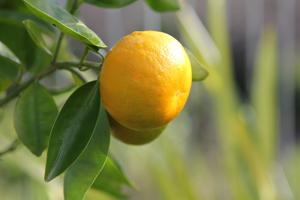Texas citrus, cold-season vegetable crops wiped out by severe weather

(The Center Square) – With sub-freezing temperatures hitting most of Texas in mid-February, citrus producers in South Texas and other growers are assessing the damage, and it’s extensive.
Winter Storm Uri temperatures and wind were worse than the freezes of 2004 and 2011 that damaged some South Texas crops and rivaled the 1989 freeze, Juan Anciso, Ph.D., Texas A&M AgriLife Extension Service horticulturist based in Weslaco, told the Weatherford Democrat. Last month’s freezing temperatures were considered Texas’ second-worst freeze since 1899.
Texas is the third-largest citrus-producing state behind California and Florida, with the commercial citrus industry in the Rio Grande Valley bringing in an estimated $468 million in annual business.
With roughly 50 percent of grapefruit still on the trees when Storm Uri hit, the industry estimated it might lose half of its grapefruit crop and nearly all of its Valencia orange crop, a late-season harvest. Most of the citrus crops in the Rio Grande Valley are harvested from September through May.
Roughly 200 acres of lemons and limes were completely destroyed. If producers decide to plant new crops, it will take another three to five years for them to bear fruit.
Citrus groves are primarily located in parts of Hidalgo, Cameron and Willacy counties, which received federal disaster declarations.
The South Texas citrus industry suffered severe losses from the combination of excessively low temperatures and wind, after having already been hit hard by a double whammy of COVID restrictions dropping sales and Hurricane Hanna bringing in historic flooding last July. Hanna cost the industry in total roughly 25 percent of its crops, an estimated loss of $100 million.
If temperatures drop below 28 degrees Fahrenheit for more than five hours, citrus fruits begin to freeze inside, and are ruined. On some days last month, citrus crops faced temperatures as low as 21 degrees for several hours.
The 20-year annual average for grapefruit produced in the Rio Grande Valley is roughly 460 million pounds, according to Texas Citrus Mutual. More than half of this year’s grapefruit yield will be lost and all of Valencia orange crops will be a near total loss. Losses will extend into next year because new citrus blooms were frozen. What would have become fruit for next year’s harvest is gone.
“This will last well into 2021 and 2022,” Dale Murden, president of Hidalgo County-based Texas Citrus Mutual, told the Texas Tribune. “The ability for Texas grapefruit growers to get it to your shelf right now is zero until we start growing a crop.”
The citrus industry was hit hard by the state’s nearly one-year long shutdown. Schools and restaurants comprise a significant share of the sales for Texas citrus. Last year, total citrus cartons were 11,349,000 compared to a 20-year average of 14,820,000 cartons, Citrus Industry Magazine reports.
Murden is asking Texans for support.
“As a grower, I would appeal to consumers to stick with us and, when we do get back on the shelf, please support us,” he said.
Anciso says the region also “saw significant losses on a number of both cold- and warm-season vegetable crops.”
Cool-season vegetable crops, especially Swiss chard, beets, cabbage and celery, were also lost, and warm-season crops like potatoes and watermelons were also devastated. Potatoes are harvested between mid-March to the end of April. Watermelons are harvested from mid-April to early June.
AgriLife Extension agents are expected to compile total crop losses for the Rio Grande Valley, however the extent of the long-term damage is too early to tell.
Disclaimer: This content is distributed by The Center Square
